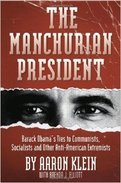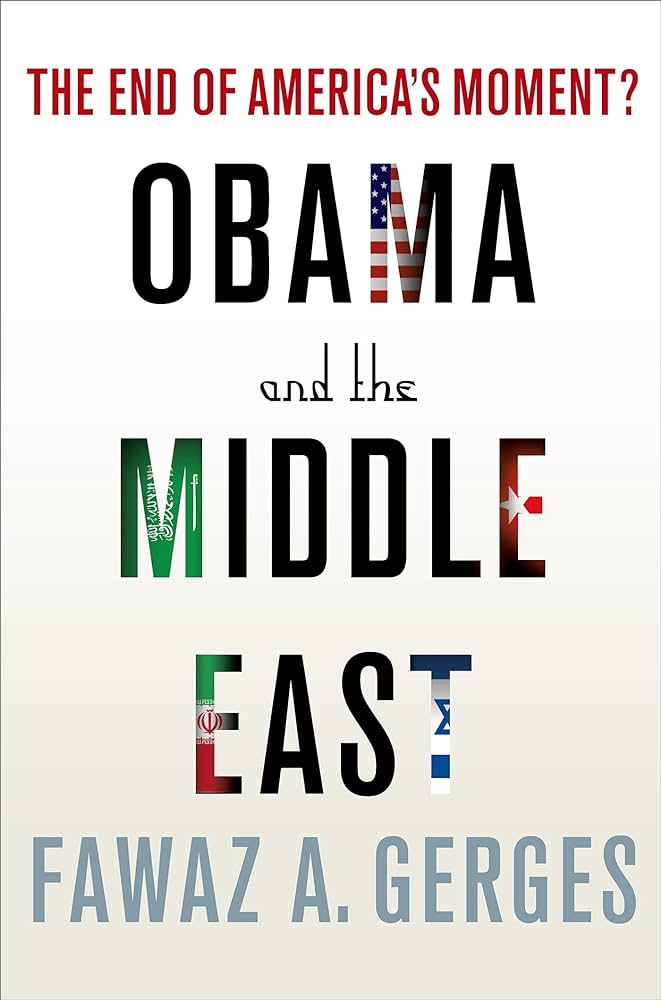 Did you suspect that there were dark secrets behind Barack Obama’s rise to the Oval Office? American journalist Aaron Klein and historian Brenda J. Elliot did. In their book The Manchurian President, they expose what the American public and media failed to ask and answer during the 2008 presidential campaign. After two years of research, they began to “[piece] together an intricate puzzle that revealed a man with an agenda far more radical and dangerous than he portrays—a politician backed by groups and individuals who seek to drastically alter the U.S. system or destroy it altogether” (p. ix). Though Klein and Elliot hardly believe that Obama is a brainwashed sleeper agent, they contend that he is the product of an anti-American agenda put forth by extremists and radicals. They conclude that their president’s “radical associates have an explicit, though publicly concealed, agenda of ‘boring from within’ America’s democratic and capitalist free-enterprise system, in order to weaken or destroy it” (p. x). Obama, in other words, is an all-in-one spearhead for communists, socialists, black Christian and Islamic radicals, and anti-American exceptionalism and war misfits.
The fourteen chapters of the book present people and organizations using Obama as their agent to injure America, such as Bill Ayers, David Axelrod, Valerie Jarrett, Jeremiah Wright, and Louis Farrakhan to the Gamaliel Foundation, the New Party, Acorn, New Black Panthers and Project VOTE. These major players and others aimed to implement the leftist agenda—redistribute wealth, individual rights and political power. In hindsight it appears that “Obama had not borrowed the ‘movement’; the ‘movement’ was empowering Obama” (p. 151). If you support Obama, your initial impulse, like mine, might be to dismiss this book as a collection of conspiracy theories. We should remember, however, that conspiratorial interpretations of political actors have been a part of the American political tradition since its beginning. Furthermore, “the beliefs in plots was not a symptom of disturbed minds but a rational attempt to explain human phenomena in terms of human intentions and to maintain moral coherence in the affairs of men,” as the Pulitzer Prize winning American historian Gordon S. Wood reminds us in his book The Idea of America: Reflections on the Birth of the United States (2011). And just as Gordon understands that “men everywhere wrestled with the demands the changing social reality was on their thought,” we should bear in mind that Klein and Elliot are responding to threats against their changing reality. Along with giving the authors the benefit of the doubt, I give them credit for pointing out individuals and associations that were truly controversial, corrupt and dangerous by any American’s standards. For example, one of Obama’s most enduring supporters, American professor Bill Ayers, was a co-founder of the Weatherman (later called the Weather Underground). The Weatherman was an anti-war group that took responsibility for bombing police cars to protest against the killing of two black panthers by cops in 1969. They also bombed the Capitol in 1970 and the Pentagon in 1971. Second, Klein and Elliot identify the names and internal relations of countless unions, social and political organizations that share socialist and communist ideas. Yes, those groups sought to change the American status quo, one way or another, such as the New Party, whose official declaration is: “the social, economic and political progress of the United States requires a democratic revolution in America—the return of power to the people” (p. 82). Third, the authors provide several examples of Obama attempting to distance himself from extremists and radicals who supported his campaign after the media brought widespread attention to them. One of the most controversial was his pastor Jeremiah Wright, a gladiator of black liberation theology well-known for his infamous anti-American sermon “God Damn America.” They remind the reader that Obama was baptized in Trinity United Church of Christ and a good standing member for twenty years, before he publicly denounced some of his pastor's rhetoric during his 2008 campaign. What we have here so far are facts in Obama’s history not conspiracy theories. But do they prove that Obama is executing an anti-American agenda? No. In fact, a closer look at the authors’ unstated assumptions, premises and inferences, show that the authors fail to demonstrate that Obama was involved in any form of terrorism or extreme agenda and that their understanding of what an anti-American is might even be radical. The underlying assumption of the book is that the norms in American society are Christianity, conservatism, capitalism, and American exceptionalism, all of which underscore the bias against the Left. To make their case, the authors demonize some of the American political views originating or culminating in the 1960s and 1970s. They go too far in framing the domestic and foreign policies of the Left as proponents of Communism only. Indeed, many Americans on the Left have expressed their political discontents in Marxist language. But their policies in support of unions, universal health care, welfare programs, civil rights and restricted military engagement, which have their roots in American history prior to the 1960s, do not call for the destruction of the United States. Ending the Vietnam War, instituting Civil Rights and Affirmative Action, and increasing taxes on the 1 percent do not pose the same threat as a brigade of Confederate soldiers led by Robert Lee. For this reason, the authors’ charge that the Left want to “drastically alter” and “destroy” America needs further explanation. Here’s why. I understand that it is bad to destroy something that is particularly understood to be good. And it is quite obvious that the U.S. prior to Obama’s election for Klein and Brenda was good. And therefore, to alter America away from the authors’ ideal is dangerous (but dangerous to them). By this reasoning, Americans attempting to change America from the authors’ point of view is radical. To the authors’ credit, they are not the first to call the Left radicals in American history. But being a radical does not have to mean one is anti-American. Let us not forget the Founding Fathers who quarreled over whether there should be a Constitution at all. The anti-federalists and the federalists held opposing views of how the American government should be structured. We don’t argue if any of them were anti-Americans, though we regard some of them as radicals. Ultimately, Klein and Elliot succeeded in demonstrating that it is not unreasonable to doubt that Obama is an all-American Christian who has America’s best interests at heart. Even when they admit that Obama might not be as radical as some of his associates, they show that it is possible and probable. For example they state: “the authors of this book found no evidence whatsoever indicating that Obama is today a Muslim.” But they go on to emphasize “his Islamic roots, his ongoing ties to Islam and Kenyan tribalism—as well as to radical Middle Eastern associates, individuals whom the politician has acknowledge helped to color his world views” (p. 41). In conclusion, anyone suspecting Obama of a mission besides the one he made an oath to keep on January 20, 2009 will find plenty of leads to follow in this book, all of which tie Obama to the Left. But I argue that it is only natural for Obama, being sympathetic to the causes of the Civil Rights, post-colonial and anti-war movements, to secure the support of left-leaning Americans—from moderates to radicals. However, along with progressives and liberals, Obama also chose to work closely with Republicans and has adopted some of their agendas. And we should note that no other president appointed three persons from his opposing party to his cabinet—Robert Gates, secretary of defense, Ray LaHood, secretary of transportation, and former Senator Judd Gregg, commerce secretary (who withdrew). The authors, of course, do not mention such associations. Without a doubt, whether for or against the forty-fourth president of the United States, readers will discover a diverse range of motives and affiliations behind the politically thrilling scenes of Obama’s tour to the White House in The Manchurian President.
1 Comment
|
Kasaun E. HenryKasaun is a philosopher and intellectual historian, from Harlem, NY. He specializes in the intellectual history of American democracy and the American Dream, theories of secularization, and the history and philosophy of human rights. He also focuses on the "Obama Phenomenon" and "The Age of Obama." ArchivesCategoriesUpcoming review . . .
|
 RSS Feed
RSS Feed

